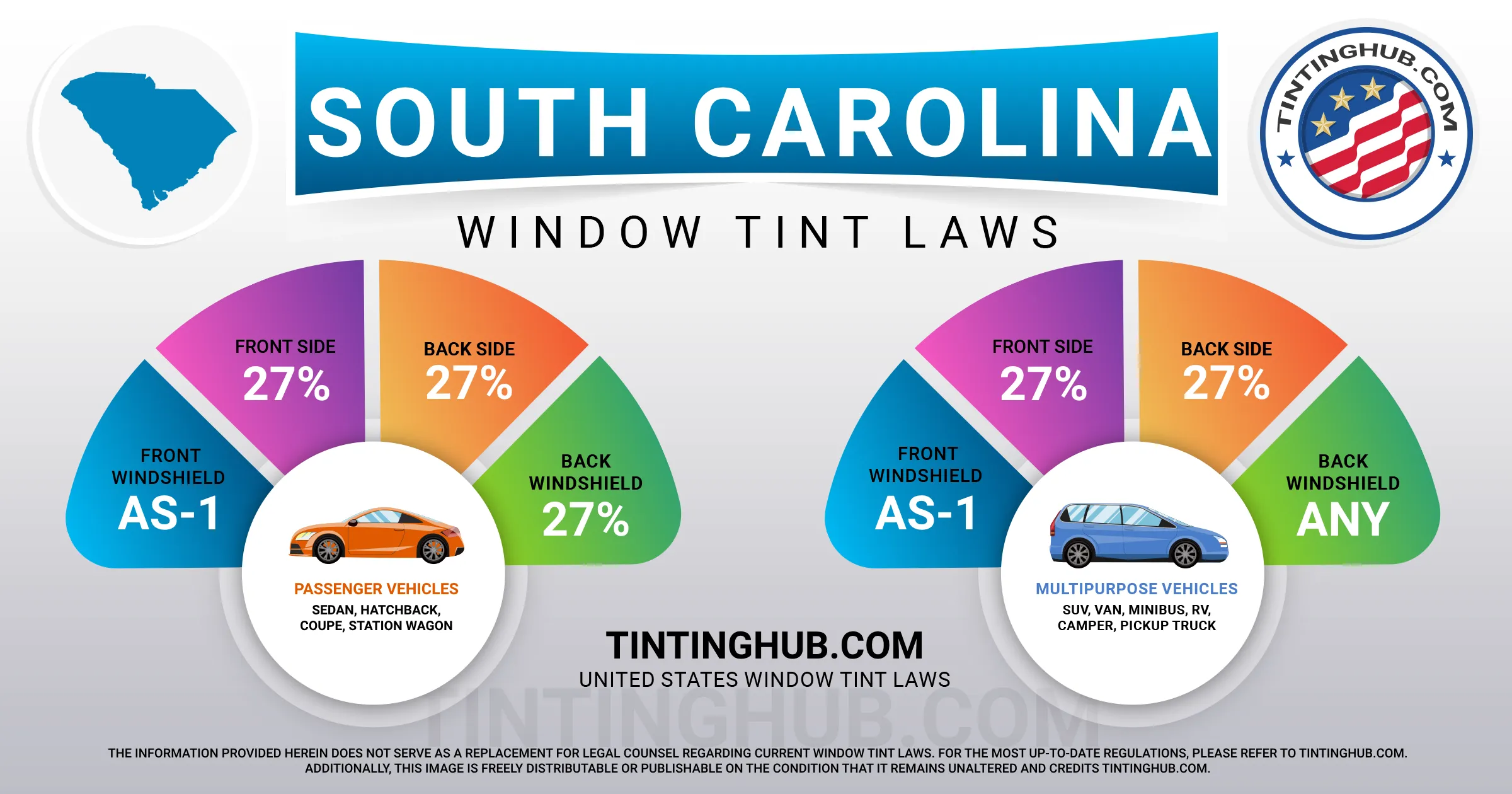South Carolina Car Window Tinting Laws
Car window tinting regulations in South Carolina have been in effect since 1992, and it’s crucial for vehicle owners to be aware of the specific requirements when it comes to window tint darkness and reflection. In this article, we’ll provide you with comprehensive information regarding South Carolina’s window tint laws, ensuring that your vehicle’s window tint adheres to the state’s regulations.

Window Tint Darkness: What You Need to Know
The darkness of your car’s window tint is typically measured by VLT, which stands for Visible Light Transmission. South Carolina has established precise guidelines for the percentage of light allowed through the tint, which varies for sedan cars and SUVs or vans.
Tint Darkness for Sedans
- Windshield: Non-reflective tint is allowed above the manufacturer’s AS-1 line.
- Front Side Windows: Must allow more than 27% of light in.
- Back Side Windows: Must allow more than 27% of light in.
- Rear Window: Must allow more than 27% of light in.
Tint Darkness for SUVs and Vans
- Windshield: Non-reflective tint is allowed above the manufacturer’s AS-1 line.
- Front Side Windows: Must allow more than 27% of light in.
- Back Side Windows: Any darkness can be applied several inches from the top of the window (specific darkness not specified).
- Rear Window: Any darkness can be used.
Window Tint Reflection: Minimizing Glare and Heat
Window tint can help reduce glare and heat by reflecting incoming light. South Carolina’s window tint law allows for a certain level of window reflection, and it’s essential to be aware of this requirement.
Tint Reflection for Sedans
- Front Side Windows: Must be non-reflective, though state law does not specify the exact definition of “non-reflective.”
- Back Side Windows: Must also be non-reflective, with no specific definition provided by state law.
Tint Reflection for SUVs and Vans
- Front Side Windows: Must be non-reflective, without a specific definition from state law.
- Back Side Windows: Must be non-reflective, with no specific definition provided.
Additional South Carolina Window Tint Regulations
South Carolina has several other important rules and regulations concerning window tinting:
- Side Mirrors: If you tint the back window, you must have dual side mirrors.
- Restricted Colors: The law does not permit tint colors in red, amber, or yellow.
- Certificates: Film manufacturers must certify the film they sell in South Carolina, so ensure that your dealer uses certified film.
- Stickers: You must place a sticker identifying legal tinting between the film and glass on each tinted window.
- Medical Exceptions: South Carolina allows for medical exemptions for special tint. For detailed information about the specific terms of this exemption, consult your state’s law.
- Penalties: Violating tinting laws in South Carolina is a misdemeanor, and it carries a minimum $200 fine or up to 30 days in prison for each offense.
Please be aware that interpretations of South Carolina’s tinting laws and regulations may vary by county or place of residence. Therefore, it’s advisable to double-check the information provided here with your local DMV or law enforcement authorities.
This information about South Carolina’s window tint laws is up to date as of 2023. If you find any inaccuracies or outdated information, please don’t hesitate to contact us so that we can make the necessary updates. We take pride in being a trusted industry leader in providing accurate and reliable information about window tint laws.